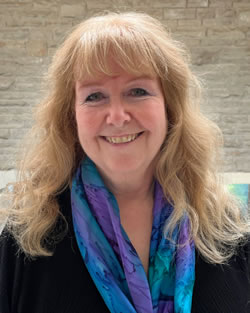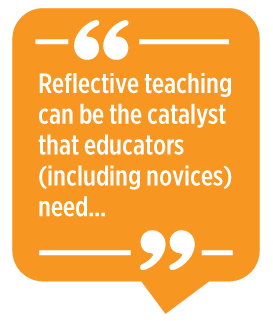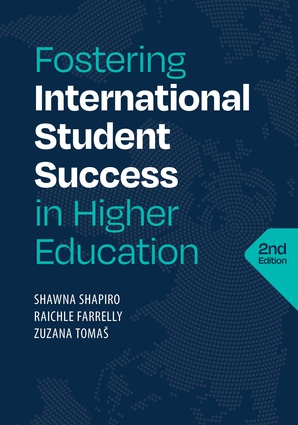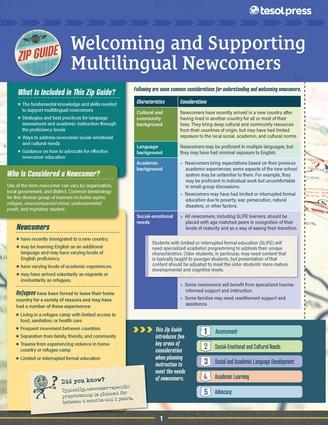From the President: On Reflective Teaching in English Language Teaching
by Shelley Taylor
 I have been thinking about reflective language teaching and what it means for the English language teacher. What is reflective practice, exactly? Dewey (1933) defined reflective practice as “active, persistent, and careful consideration of any belief or supposed form of knowledge in the light of the grounds that support it” (p. 16). In the teaching profession, reflection may stem from seeking a resolution to a thorny problem (Dewey, 1933) or a broader concern with routine practice (Farrell, 2022). Engaging in reflection on one’s practice is seen as a mark of professional competence across several fields (Farrell, 2020).
I have been thinking about reflective language teaching and what it means for the English language teacher. What is reflective practice, exactly? Dewey (1933) defined reflective practice as “active, persistent, and careful consideration of any belief or supposed form of knowledge in the light of the grounds that support it” (p. 16). In the teaching profession, reflection may stem from seeking a resolution to a thorny problem (Dewey, 1933) or a broader concern with routine practice (Farrell, 2022). Engaging in reflection on one’s practice is seen as a mark of professional competence across several fields (Farrell, 2020).
In the case of preservice teachers trying to make sense of all the phenomena they experience simultaneously as novice educators out in the field, reflecting on “routine” practice may be challenging in and of itself. They need time to become familiar enough with routines to distinguish between what is the norm and what is exceptional. Despite feelings of being overwhelmed, and the challenges of being frequently asked to “reflect” on a variety of topics in initial teacher education programs, requesting that they do so is valid. Schön (1987) believes that all educators—even ones new to the field—“know” more than they can articulate. For this reason, Farrell (2022) suggests prompting educators to reflect-in-action.
 The European Centre for Modern Languages (Council of Europe, 2023) view an educator’s ability to draw on their “reflexive repertoire” to analyze a (thorny) issue or occurrence in their teaching as a necessary competence to develop. In fact, they view it as a key part of educators’ ability to identify and pursue professional learning that is relevant to their needs. Educators need to learn both (a) how to reorient their practice and (b) how to recognize when it is time to do so. Importantly, they need to develop the resourcefulness and resilience to face inevitable future challenges and changes (Farrell, 2020). As such, it is worth the time to invest in developing their competence for self-reflection and to expand their reflexive repertoire.
The European Centre for Modern Languages (Council of Europe, 2023) view an educator’s ability to draw on their “reflexive repertoire” to analyze a (thorny) issue or occurrence in their teaching as a necessary competence to develop. In fact, they view it as a key part of educators’ ability to identify and pursue professional learning that is relevant to their needs. Educators need to learn both (a) how to reorient their practice and (b) how to recognize when it is time to do so. Importantly, they need to develop the resourcefulness and resilience to face inevitable future challenges and changes (Farrell, 2020). As such, it is worth the time to invest in developing their competence for self-reflection and to expand their reflexive repertoire.
The European Centre for Modern Languages discusses one particular approach that involves developing the competences to gain the professional learning needed to adopt and develop pluralistic linguistic and cultural approaches to teaching in mainstream classrooms (Council of Europe, 2023). In this case, reflective teaching can be the catalyst that educators (including novices) need in order to focus on specific aspects of teaching, even if these educators understand the necessary changes only in broad, not formally articulated ways.
The extent of the change effected by adopting reflective teaching approaches may depend on an educator’s related experiences, experience in the profession, and how disparate their beliefs were initially in relation to the mindset required for certain practices to bear fruit. What is certain is that reflective teaching can serve as a major catalyst for educators’ understanding of thorny issues or broad questions about practice. It also goes hand in hand with engagement and can stimulate action, both of which can only benefit teachers and their learners.
References
Dewey, J. (1933). How we think: A restatement of the relation of reflective thinking to the educative process. Houghton-Mifflin.
Council of Europe. (2023). Developing teacher competences for pluralistic approaches. https://www.ecml.at/ECML-Programme/
Programme2020-2023/Developingteachercompetencesforpluralistic
approaches/tabid/4300/language/en-GB/Default.aspx
Farrell, T. S. C. (2020). Professional development through reflective practice for English-medium instruction (EMI) teachers. International Journal of Bilingual Education and Bilingualism, 23(3), 277–286. https://doi.org/10.1080/13670050.2019.1612840
Farrell, T. S. C. (2022). Reflective practice in language teaching. Cambridge University Press. https://doi.org/10.1017/9781009028783
Schön, D. A. (1987). Educating the reflective practitioner. Jossey-Bass.
Shelley Taylor is currently a professor at University of Western Ontario in Canada. Prior to her election as TESOL president (2023–2024), Taylor was a frequent presenter and contributor to English language teaching publications and scholarly research, and she was a TESOL board member from 2016–2019.
TESOL Blogs
Interested in writing a blog for TESOL?
Read the submission guidelines and send us your post!
Check out some of the most recent TESOL Blogs:
|
4 AI Chrome Plugins to Boost English Language Learning, by Brent Warner

As English language teachers, we constantly search for innovative tools and techniques to assist our multilingual learners of English (MLEs) in their language acquisition journey. The conversations around using AI are only accelerating, so today we’re going to look at some ChatGPT Chrome plugins that you can introduce to your students to support their growth. These plugins leverage the power of AI to enhance speaking, writing, and comprehension skills, providing valuable support to both teachers and students. Read more. |
|
Reading With the Greatest Generation: Literacies of Healing, by Spencer Salas

Happy first days of summer from the University of North Carolina at Charlotte! Here in the United States on the last Monday of May, we honor the men and women who died serving in the U.S. armed forces. The tradition began in the years following the U.S. Civil War as “Decoration Day.” In 1971, Memorial Day became a federal holiday. The start of the summer season, for teachers, Memorial Day means that the school year is just about done. Read more. |
|
Scaffolding Writing for Multilingual Learners, by Naashia Mohamed

Writing is an incredibly difficult and messy process. Even accomplished writers can find it daunting. When you are writing in a language you are not fully confident using, the challenge is even greater. For our multilingual learners (MLs), for whom English is an additional language, writing can often be a struggle. This is particularly the case when there is too much emphasis on the final product of writing at the end. To support developing writers effectively, we need to focus more on the process of writing, and to provide supportive feedback. Read more. |
TESOL Bookstore

Featured Resources from TESOL Press
ELT Basics is an invaluable resource for those seeking a straightforward, practical, and foundational understanding of English language teaching. This book covers a broad range of important topics, such as what it means to “know” a language, how people learn new languages, and what teachers can do to teach English effectively. Whether you’re looking for a basic understanding of ELT or considering a career in language teaching but want to know more first, this book will teach you about language acquisition as well as how to plan, instruct, and assess multilingual learners of English.
 Fostering International Student Success in Higher Education, Second Edition
Fostering International Student Success in Higher Education, Second Edition
Shawna Shapiro, Raichle Farrelly, Zuzana Tomaš
(Copublished by TESOL and NAFSA)
The increase in the number of international students attending English-dominant schools brings benefits as well as challenges for institutions. Shapiro, Farrelly, and Tomaš provide a lively, informative discussion that answers the questions instructors commonly ask when seeking to ensure success for these students: What do I do to help students be successful in U.S. academic culture? How can I ensure that the content for my course is comprehensible to students who are still learning English? How do I design assignments and assessments that are fair while still acknowledging the difficulty of doing academic work in a second or foreign language? How might I treat international students as a linguistic and cultural asset in the classroom, and help them to become institutionally integrated?
 TESOL Zip Guide:
TESOL Zip Guide:
Welcoming and Supporting Multilingual Newcomers
Amber Warren, Melissa Hauke, Jan By Ying Hui-Michael, Adrienne Johnson
Newcomers are students who have recently immigrated to a new country, may be learning English as an additional language, and may have varying levels of English proficiency. This guide introduces five key areas of consideration when planning instruction to meet the unique social-emotional, linguistic, cultural, academic, and programming needs of multilingual learners of English who are newcomers. It includes strategies and best practices for language assessment and academic instruction through the proficiency levels, and guidance on how to advocate for effective newcomer education.